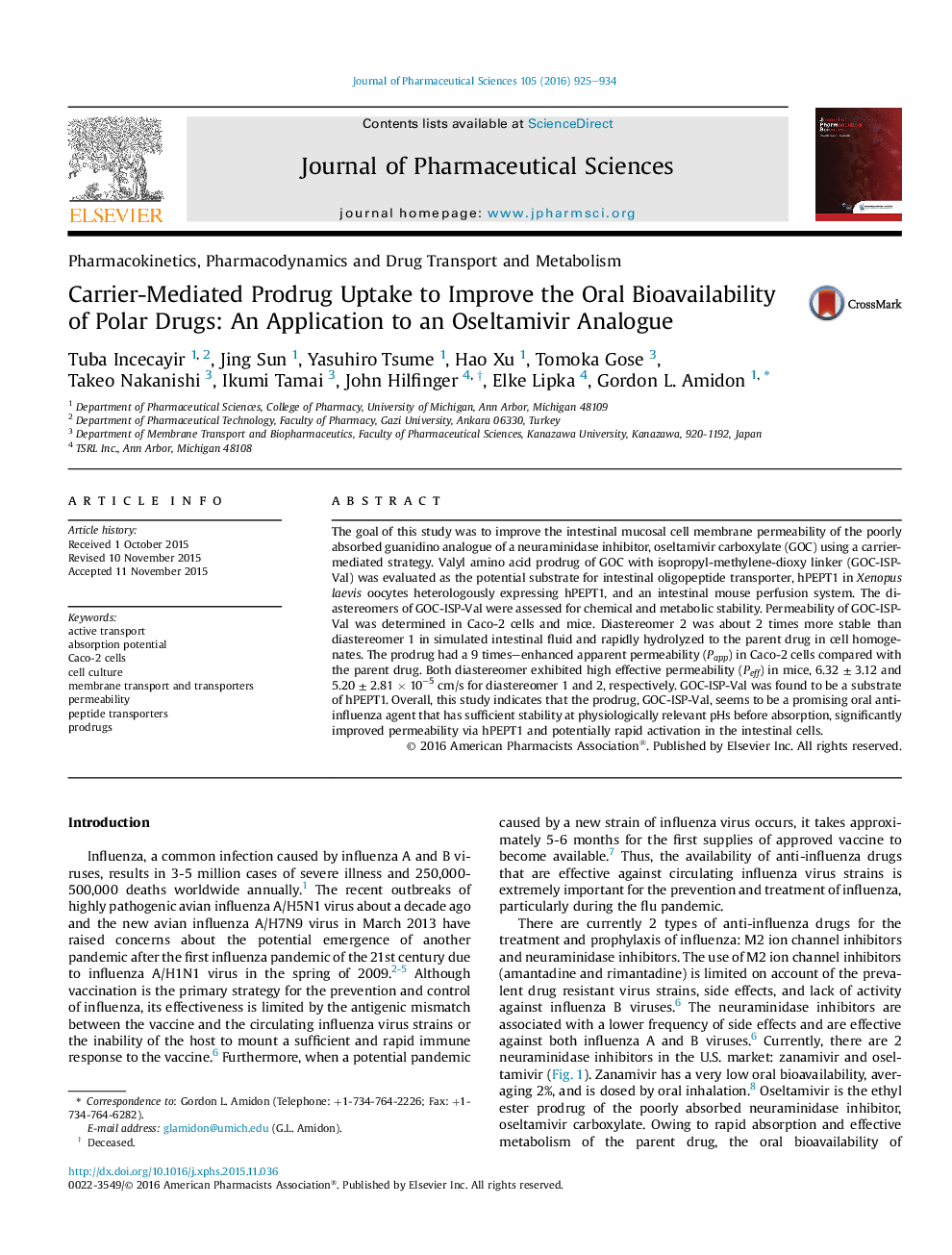| Article ID | Journal | Published Year | Pages | File Type |
|---|---|---|---|---|
| 2484297 | Journal of Pharmaceutical Sciences | 2016 | 10 Pages |
Abstract
The goal of this study was to improve the intestinal mucosal cell membrane permeability of the poorly absorbed guanidino analogue of a neuraminidase inhibitor, oseltamivir carboxylate (GOC) using a carrier-mediated strategy. Valyl amino acid prodrug of GOC with isopropyl-methylene-dioxy linker (GOC-ISP-Val) was evaluated as the potential substrate for intestinal oligopeptide transporter, hPEPT1 in Xenopus laevis oocytes heterologously expressing hPEPT1, and an intestinal mouse perfusion system. The diastereomers of GOC-ISP-Val were assessed for chemical and metabolic stability. Permeability of GOC-ISP-Val was determined in Caco-2 cells and mice. Diastereomer 2 was about 2 times more stable than diastereomer 1 in simulated intestinal fluid and rapidly hydrolyzed to the parent drug in cell homogenates. The prodrug had a 9 times-enhanced apparent permeability (Papp) in Caco-2 cells compared with the parent drug. Both diastereomer exhibited high effective permeability (Peff) in mice, 6.32 ± 3.12 and 5.20 ± 2.81 à 10â5 cm/s for diastereomer 1 and 2, respectively. GOC-ISP-Val was found to be a substrate of hPEPT1. Overall, this study indicates that the prodrug, GOC-ISP-Val, seems to be a promising oral anti-influenza agent that has sufficient stability at physiologically relevant pHs before absorption, significantly improved permeability via hPEPT1 and potentially rapid activation in the intestinal cells.
Keywords
Related Topics
Health Sciences
Pharmacology, Toxicology and Pharmaceutical Science
Drug Discovery
Authors
Tuba Incecayir, Jing Sun, Yasuhiro Tsume, Hao Xu, Tomoka Gose, Takeo Nakanishi, Ikumi Tamai, John Hilfinger, Elke Lipka, Gordon L. Amidon,
